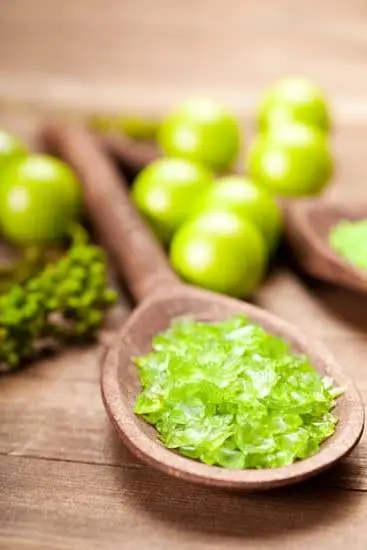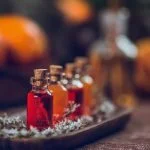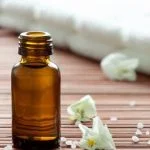Aromatherapy is a practice that has been used for centuries to promote relaxation, improve mood, and enhance overall well-being. The use of essential oils is at the core of this ancient art, with each oil offering a unique set of therapeutic benefits. However, in order to harness the full potential of these oils, proper drop measurement is of utmost importance.
Understanding how many drops to use in aromatherapy is crucial to ensure both safety and effectiveness. Whether you are new to aromatherapy or have been practicing it for years, knowing the right dosage can make all the difference in achieving desired outcomes. But why is drop measurement so important?
To begin with, essential oils are incredibly concentrated substances extracted from plants, flowers, and other natural sources. Because they are highly potent, using too many drops can lead to adverse effects such as skin irritation or even allergic reactions. On the other hand, using too few drops may not provide the desired therapeutic benefits.
Moreover, different essential oils have varying chemical compositions which means they have different levels of potency. This further emphasizes the need for accurate drop measurement as it ensures that you are getting the appropriate amount of active compounds for maximum effectiveness.
In this article, we will delve into the art of aromatherapy and explore why proper drop measurement plays a critical role in achieving optimal results. We will discuss various factors that influence drop count and examine different dropper types and conversion guidelines for precise dosage. Additionally, we will cover topics such as individual needs assessment, safety precautions, aroma potency versus drop count relationship, different aromatherapy techniques, and expert tips from professionals in the field.
By understanding how many drops are needed for aromatherapy and learning the best practices for measuring them accurately, you will be able to confidently create your own personalized blends and experience the myriad benefits that essential oils have to offer. So let us embark on this journey together and uncover the secrets behind mastering the art of drop measurement in aromatherapy.
Understanding Essential Oils
Aromatherapy relies on the use of essential oils, which are highly concentrated plant extracts that capture the natural fragrance and therapeutic properties of various plants. These oils are extracted from different parts of plants such as leaves, flowers, stems, bark, and roots. Each essential oil contains its unique combination of active compounds that contribute to its specific aroma and potential health benefits.
Essential oils have been used for centuries in traditional medicine practices due to their believed therapeutic effects. In aromatherapy, these oils are commonly used through inhalation or topical application to promote physical and emotional well-being.
When inhaled, the aroma of essential oils can stimulate the olfactory system, which is linked to the brain’s limbic system that controls emotions, memories, and behavior. This interaction between the aromatic molecules and our brain may explain why certain smells can evoke strong emotional responses or trigger memories.
In addition to their aromatic properties, essential oils may also have direct physiological effects when applied topically. The active compounds within the oil enter the bloodstream through the skin or mucous membranes and can influence various body systems. For example, some essential oils possess anti-inflammatory properties that can help reduce pain or swelling when applied to the skin.
To maximize the benefits of essential oils in aromatherapy, it is crucial to understand their individual properties and potential effects. Different oils may have distinct therapeutic uses ranging from relaxation and stress relief to immune support or respiratory improvement. Therefore, choosing the right essential oil for a particular purpose is important in achieving desired results.
To wrap it up:
- Essential oils are highly concentrated plant extracts used in aromatherapy.
- They are derived from different parts of plants such as leaves, flowers, stems, bark, and roots.
- Essential oils work through inhalation or topical application to promote physical and emotional well-being.
- Inhalation stimulates the olfactory system, which is linked to emotions and memories.
- Topical application allows the active compounds to enter the bloodstream and influence various body systems.
- Each essential oil has unique properties and potential effects, making it important to select the right one for specific purposes in aromatherapy.
The Science Behind Drop Measurement
When it comes to accurately measuring drops for aromatherapy, understanding the science behind drop measurement is essential. This section will provide a breakdown of different dropper types commonly used in aromatherapy and conversion guidelines for accurate dosage.
There are primarily two types of droppers used in aromatherapy: Euro droppers and standard glass droppers. Euro droppers are typically used with essential oil bottles that have a small, narrow opening. They consist of a rubber bulb attached to a plastic or glass dropper tube.
The bulb is squeezed to draw the oil up into the tube, and then released to dispense the drops. On the other hand, standard glass droppers have a rubber or silicone bulb attached directly to a glass dropper tube. To dispense drops, the user simply squeezes the bulb and releases it.
In terms of conversion guidelines, it’s important to note that not all drops from different essential oils are of equal volume due to their varying viscosities. However, as a general guideline, most essential oil manufacturers suggest that 20 drops equals approximately 1 milliliter (ml).
| Essential Oil | Approximate Number of Drops per ml |
|---|---|
| Lavender | 20-25 drops/ml |
| Peppermint | 23-28 drops/ml |
| Tea Tree | 18-22 drops/ml |
The conversion guidelines provided above are approximate and can vary slightly depending on factors such as the source of the essential oil and its individual characteristics. It’s always recommended to check the specific recommendations provided by the manufacturer of the essential oil you are using.
By understanding the different dropper types and having a general understanding of conversion guidelines, individuals practicing aromatherapy can ensure accurate dosage and achieve optimal results in their aromatherapy practices.
Factors Influencing Drop Count
Chemical Composition of Essential Oils
The chemical composition of essential oils can vary greatly, and this plays a significant role in determining the number of drops needed for effective aromatherapy. Different essential oils contain varying levels of volatile compounds, which are responsible for their therapeutic properties. For example, some essential oils are highly concentrated and potent, requiring fewer drops to achieve the desired effect.
On the other hand, oils with a lower concentration of active compounds may require a higher number of drops to have a noticeable impact. It is essential to understand the specific properties of each oil and adjust the drop count accordingly.
Aroma Potency
Another factor that influences drop count is the potency or strength of the aroma produced by different essential oils. Some oils have a more intense fragrance, meaning that they can deliver their therapeutic benefits with just a few drops.
Conversely, milder oils may require a larger number of drops to achieve the desired scent and effect. It is important to note that the potency of an oil’s aroma does not necessarily correlate with its therapeutic efficacy, as even milder scents can still possess powerful healing properties.
Desired Aromatherapy Outcome
The desired outcome from aromatherapy also affects the number of drops required for each session. Depending on individuals’ goals-whether it be relaxation, pain relief, stress reduction, or mood enhancement-the ratio and variety of essential oil drops will vary accordingly.
For example, if someone wants to promote deep relaxation and calmness, they may need more drops of calming oils like lavender or chamomile compared to invigorating ones such as peppermint or eucalyptus. The desired aromatherapy outcome should always guide one’s decision regarding how many drops to use in each application.
Understanding these factors influencing drop count is crucial for practicing effective aromatherapy safely. By recognizing the chemical composition of essential oils, their aroma potency, and considering your desired aromatherapy outcome, you can tailor your drop count to maximize the benefits of each session.
It is important to note that while these factors provide a general guideline, personal preferences and sensitivities should also be taken into account. Aromatherapy is a highly individualized practice, and finding the right number of drops for optimal results may require some experimentation and adjustment.
Assessing Individual Needs
Aromatherapy is a highly versatile practice that can be tailored to meet individual needs and preferences. In order to determine the ideal number of drops for effective aromatherapy, it is important to assess personal health goals and desired outcomes. This will help in selecting the right essential oils and ensuring their optimal use.
1. Identifying Personal Health Goals:
Before beginning any aromatherapy regimen, it is crucial to identify personal health goals. Are you looking to relieve stress and anxiety? Do you want to alleviate pain or improve sleep quality? By identifying specific health goals, you can select essential oils that are known for their therapeutic properties in addressing those concerns.
2. Researching Essential Oils:
Once your health goals have been identified, it is essential to research essential oils that are known for their effectiveness in targeting those particular issues. Different essential oils have different properties and benefits, so it is important to choose ones that align with your goals. For example, lavender oil is often used for relaxation and sleep while peppermint oil is known for its energizing properties.
3. Referencing Conversion Guidelines:
Understanding conversion guidelines for drop measurement can help ensure accurate dosages when using essential oils. Different dropper types may dispense varying amounts of oil per drop, so it’s important to refer to conversion guidelines provided by manufacturers or experts in aromatherapy. This will help you determine the appropriate number of drops based on your desired outcome.
By assessing personal health goals and desired aromatherapy outcomes, individuals can tailor their drop count accordingly. It’s important to remember that each person may respond differently to aromatherapy, so some experimentation might be required to find the perfect balance. As with any natural therapy, it’s always advisable to consult a qualified professional before starting any new treatment plan.
Safety Precautions
The Importance of Following Recommended Drop Guidelines
One of the key safety precautions in aromatherapy is following recommended drop guidelines. Essential oils are highly concentrated substances, and using them improperly can lead to potential risks and adverse effects. Each essential oil has its own recommended dosage based on its potency and therapeutic properties, and exceeding this dosage can result in adverse reactions.
It is important to remember that more is not always better when it comes to aromatherapy. Overdosing on essential oils can cause skin irritation, allergic reactions, respiratory issues, headaches, nausea, and even chemical burns. By following the recommended drop guidelines for each essential oil, you can minimize these risks and ensure a safe and enjoyable aromatherapy experience.
Risks of Overdosing on Essential Oils
When it comes to aromatherapy, using too many drops of essential oils can be harmful to your health. Essential oils are highly potent substances that can have powerful effects on both the mind and body when used correctly. However, when used in excess, they can become toxic and cause harm.
Overdosing on essential oils can put a strain on your liver as it works to metabolize the excess compounds. This can lead to liver damage or failure over time. In addition, some essential oils contain chemicals that may irritate the skin or mucous membranes if used excessively. This can result in redness, swelling, itchiness, or even chemical burns.
By adhering to recommended drop guidelines for each essential oil, you reduce the risk of overdosing and prevent potential health complications. It’s always better to start with a lower number of drops and gradually increase if necessary than to use excessive amounts right from the beginning.
Importance of Proper Dilution
Proper dilution is another crucial aspect of following safety precautions in aromatherapy. Most essential oils are highly concentrated and should not be applied directly to the skin without dilution. Diluting essential oils in a carrier oil helps to ensure that they are used safely and effectively.
Carrier oils, such as jojoba oil, sweet almond oil, or coconut oil, help to dilute the potency of essential oils and protect the skin from potential irritation or sensitization. They also act as a medium for better absorption of the essential oils into the skin.
Without proper dilution, applying undiluted essential oils can lead to skin irritation, allergic reactions, or sensitization. It is recommended to follow specific guidelines for dilution ratios depending on the intended use and the individual’s sensitivity.
By following recommended drop guidelines and properly diluting essential oils, you can enjoy the many benefits of aromatherapy while prioritizing your safety and well-being.
Aroma Potency vs. Drop Count
In aromatherapy, the potency of essential oils plays a crucial role in determining their therapeutic effects. The aroma and strength of an oil can vary greatly depending on factors such as the plant species, extraction method, and concentration. Understanding this concept is important when determining the appropriate number of drops to use for different aromatherapy applications.
The potency of essential oils is directly related to the number of drops used during aromatherapy. Generally, the stronger the aroma of an oil, the fewer drops are needed to achieve desired results. For example, highly potent oils such as peppermint or eucalyptus may only require 1-2 drops in a diffuser or inhalation method, while less potent oils like lavender or chamomile may require 3-4 drops.
To better understand this relationship between aroma potency and drop count, it is helpful to refer to conversion guidelines provided by reputable sources. These guidelines typically recommend a certain number of drops per ounce or milliliter (ml) based on the specific oil being used. For instance, a commonly recommended guideline is 20-25 drops per ounce (600-750 drops per 30 ml) for most essential oils.
It’s important to note that these guidelines are not set in stone and may vary based on personal preference and individual needs. Some individuals may find that they prefer a stronger scent and therefore choose to increase the number of drops used, while others may be more sensitive to certain scents and opt for fewer drops. Ultimately, finding the right balance between aroma potency and drop count comes down to experimentation and understanding one’s own body chemistry.
| Aroma Potency | Drop Count |
|---|---|
| Highly potent oils (e.g. peppermint, eucalyptus) | 1-2 drops |
| Less potent oils (e.g. lavender, chamomile) | 3-4 drops |
| Often recommended guideline: | 20-25 drops per ounce (600-750 drops per 30 ml) |
By understanding the concept of oil strength and its relation to drop count, individuals can make informed decisions about the number of drops to use in their aromatherapy practices. Experimenting with different drop counts and paying attention to personal preferences will help achieve optimal results and maximize the benefits of aromatherapy.
Exploring Aromatherapy Techniques
Aromatherapy offers a wide range of techniques for using essential oils, each with its own benefits and unique application methods. Whether you prefer inhalation or topical application, understanding the appropriate number of drops to use is crucial for achieving optimal results. In this section, we will explore the different aromatherapy techniques and discuss how many drops are typically required for each method.
1. Inhalation Techniques:
Inhaling essential oils is one of the most common methods used in aromatherapy. It can be done through various techniques such as direct inhalation, steam inhalation, or using diffusers.
For direct inhalation, it is recommended to use 2-3 drops of essential oil on a tissue or cotton ball and hold it near your nose, taking deep breaths. Steam inhalation involves adding 4-6 drops of essential oil to a bowl of hot water and gently inhaling the steam for about 5-10 minutes.
2. Topical Application Methods:
Topical application involves applying essential oils directly onto the skin. This method can provide localized therapeutic effects and is commonly used for massage, skincare routines, or pain relief. The number of drops needed will vary depending on the area of application and individual sensitivity.
As a general guideline, it is recommended to dilute essential oils in a carrier oil before applying them topically. For every teaspoon (5 ml) of carrier oil, you can add 2-3 drops of essential oil for adults and 1 drop for children.
It is important to note that these recommendations may vary based on the specific essential oil being used as well as individual preferences or sensitivities. Some oils may require fewer or more drops depending on their potency or intended purpose. Additionally, it is always advisable to consult a qualified aromatherapist or healthcare professional for personalized guidance and recommendations on the appropriate number of drops for your specific needs.
By understanding the recommended number of drops for each aromatherapy technique, you can ensure that you are using essential oils in a safe and effective manner. Experimenting with different methods and drop counts can help you find what works best for you, allowing you to fully enjoy the benefits of aromatherapy.
Expert Tips from Aromatherapy Professionals
Aromatherapy professionals have spent years perfecting their techniques and understanding the nuances of essential oils. These experts have valuable insights on how to achieve optimal results and maximum benefits through the accurate measurement of drops in aromatherapy. Here are some expert tips that can help you enhance your aromatherapy experience:
- Start with a low drop count: A common mistake when using essential oils is using too many drops at once. Aromatherapy professionals advise starting with a lower drop count and gradually increasing as needed. This allows for better control over the aroma potency and prevents overwhelming effects.
- Use carrier oils for dilution: Essential oils are highly concentrated, and some may cause skin irritation or other adverse reactions if used directly on the skin. Aromatherapy professionals recommend diluting essential oils with carrier oils, such as coconut oil or almond oil, before applying them topically. This ensures safer use while still reaping the benefits of aromatherapy.
- Experiment with blends: Aromatherapy professionals often create unique blends by combining different essential oils to achieve specific therapeutic effects. They suggest experimenting with various combinations to find what works best for you. Remember to keep track of the number of drops used in each blend for future reference.
- Pay attention to individual sensitivities: Every individual is unique, and people may react differently to certain essential oils. Aromatherapy professionals stress the importance of paying attention to any adverse reactions or sensitivities when using particular oils. If you experience any discomfort, discontinue use or consult with a professional aromatherapist.
- Store essential oils properly: To preserve the potency and extend the shelf life of essential oils, proper storage is crucial. Aromatherapy professionals advise keeping essential oils sealed tightly in amber glass bottles, away from direct sunlight, heat, and moisture. This helps maintain the quality of the oils and ensures accurate drop measurement over time.
By incorporating these expert tips into your aromatherapy practice, you can enhance your experience and achieve maximum benefits from essential oils. Remember to always follow recommended drop guidelines and consult with a professional if you have any concerns or questions about aromatherapy practices.
Conclusion
In conclusion, mastering the art of drop measurement is crucial for achieving effective and safe aromatherapy practices. Understanding essential oils and how they work in aromatherapy is the first step towards proper drop measurement. Different dropper types and conversion guidelines can help ensure accurate dosage.
Factors such as the specific essential oil being used, personal health goals, and desired aromatherapy outcomes can all influence the number of drops needed for effective results. It is important to assess individual needs and adjust the number of drops accordingly.
Safety precautions should always be taken when using essential oils. Overdosing can lead to adverse effects, so it is vital to follow recommended drop guidelines. Aroma potency also plays a role in determining the number of drops needed. Some oils are more concentrated than others, requiring fewer drops for a desired level of strength.
Different aromatherapy techniques, such as inhalation or topical application, may require varying numbers of drops. It is important to understand the specific requirements for each method to ensure maximum benefits.
Lastly, seeking advice from aromatherapy professionals can provide valuable insights and tips for achieving optimal results with accurate drop measurement. Their expertise can help navigate through various oils and methods to tailor the aromatherapy experience to individual needs.
Frequently Asked Questions
How many drops of essential oil per day?
The number of drops of essential oil to use per day depends on various factors, including the specific oil you are using, the purpose of usage, and individual tolerance. In general, it is recommended to start with a lower dosage and gradually increase if needed.
For most essential oils, a safe starting point is 1-2 drops per application or diffuser session. It is crucial to always follow the guidelines provided by the manufacturer or consult a certified aromatherapist for personalized recommendations based on your needs.
How much is 20 drops of essential oil equal to?
When measuring in drops, it is important to note that fluid volume can vary depending on the viscosity or thickness of the essential oil. However, as a general reference, 20 drops of essential oil are estimated to be roughly equal to one milliliter (ml).
This estimation may differ slightly depending on the specific essential oil being used. Remember that an accurate measurement tool like a dropper or pipette should be used when counting drops for precise dosing.
How many drops of essential oil to mix?
The number of drops of essential oil you should mix depends on what you’re using it for and your personal preferences. For topical applications like massage oils or skincare products, a common guideline is to use about 5-15 drops of essential oil for every ounce (30 ml) of carrier oil or base product. However, this ratio can be adjusted according to your desired potency and sensitivity.
When blending oils together for aromatherapy purposes or diffusing, typically 3-5 drops per 100 ml of water would suffice. It’s important to consider factors such as the strength and scent profile of each essential oil when determining how many drops to mix in order to achieve your desired outcome.

Are you looking for a natural way to improve your health and wellbeing?
If so, aromatherapy may be the answer for you.





